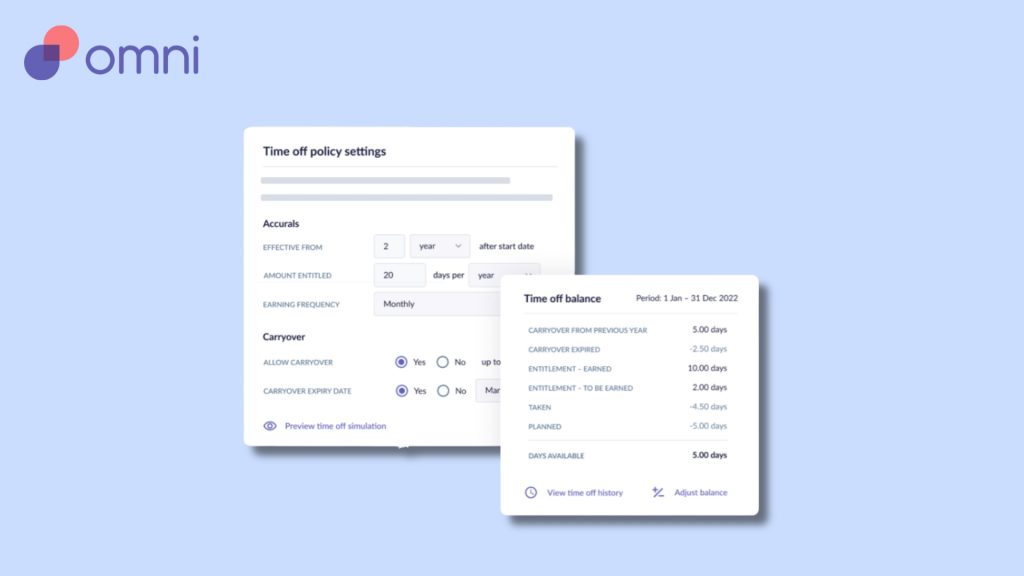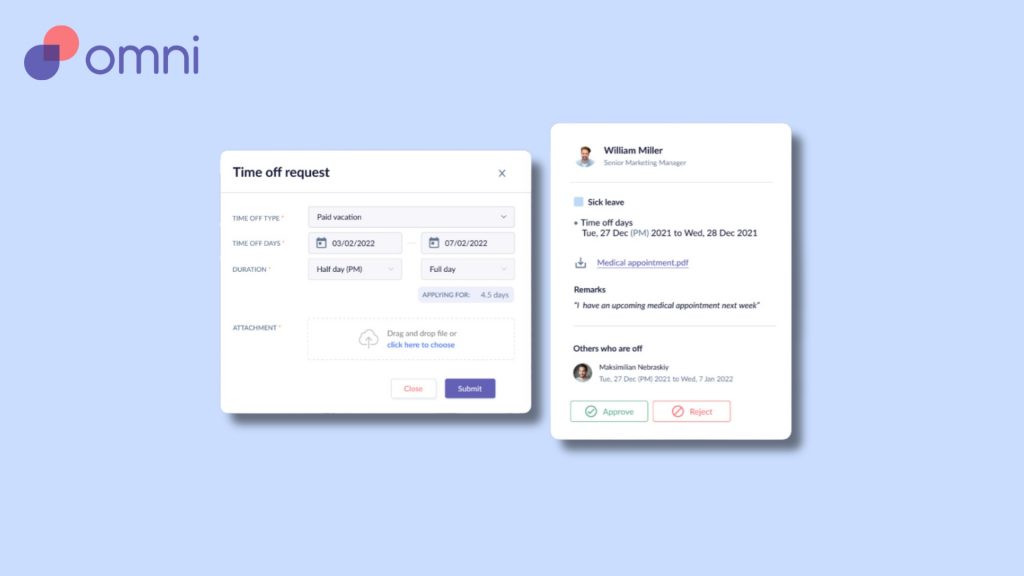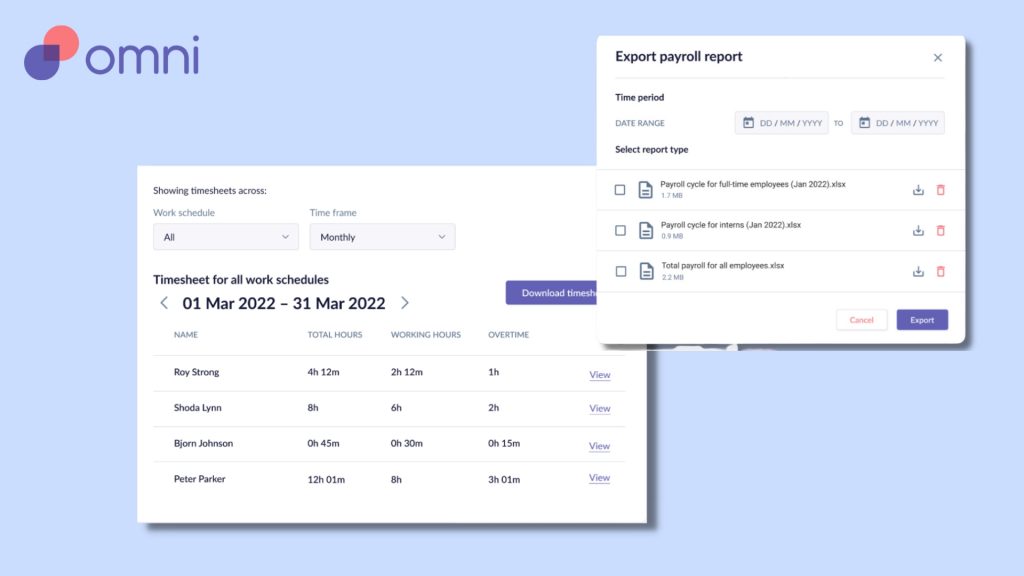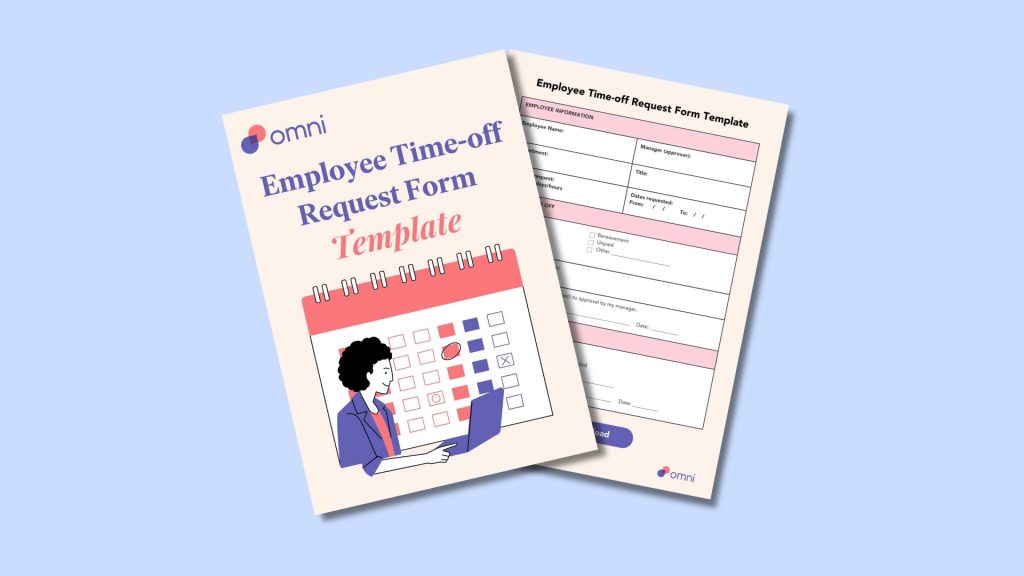Leave management systems help businesses manage employee time off requests and absences. As a business owner, you might wonder if you really need an employee leave management system. After all, can’t you just keep track of employee vacation days and parental leave in a spreadsheet?
While tracking employee’s leave manually may work for a small business with just a few employees, it quickly becomes unmanageable as your business grows and employees increase. Manually tracking, entering, and calculating employee time creates an administrative bottleneck for HR, and makes it more difficult for employees to engage with their benefits — one of the things that helps maintain employee retention and engagement.
A leave management system provides an easy to use solution to help you automate the processes associated with managing employee time off policies, and empowers employees to utilize their time off benefit, helping combat employee burnout and promote higher productivity and employee happiness.
Leave Management System Defined
A leave management system is a software application that helps organizations keep track of employee leave and absences.Often included in a larger HRIS system, a leave management system can automate time off related processes such as applying for leave, approving requests, calculating leave entitlements, and determining the remaining leave balance. A leave management system is also sometimes referred to as a paid time off tracker (PTO tracker), and manages everything from PTO, sick leave, personal time, parental leave, and sabbaticals.
Benefits of a Lead Management System
Leave management is a core component of any HR workflow, as it allows organizations to effectively track and manage employee time off, which affects various aspects of your business, from payroll to personnel management, benefits and even employee engagement.
Accurate calculation
Time off is heavily connected with employee compensation. Failure to determine the accurate time off balance may lead to incorrect salary calculations and administrative headaches. A leave management system can help determine accurate time off balances, which helps streamline payroll, benefits administration, offboarding, and overall scheduling logistics for your team.
Streamlined processes
A leave management system eliminates the need for manual leave tracking and automates the processes associated with applying for, approving, and managing leave. Your employees can easily access a comprehensive view of the remaining number of days they have left, allowing them to plan time off without having to rely on their managers or HR team to calculate their time off. This relieves HR of the administrative burden of employee time off, and empowers employees to fully access their benefits.
Ensured compliance
Most countries or states have statutory requirements on sick leave, maternity leaves, and other mandatory leave entitlements for employees. A leave management system can help your business easily comply with employment regulations by calculating the accurate balance of the various types of leave each employee should be entitled to, so you don’t have to worry about oversights or miscalculations that could lead to larger compliance issues.
Increased visibility
An employee leave management system not only allows individual employees to access their leave allowance, but provides a simplified platform for their managers to do the same. Many leave management systems have the option to create a shared calendar where entire teams or companies can access a view of the company collective calendar, so that everyone can have a clear view of who is going to be on leave at any given time and plan accordingly. This way, your team can avoid disruptions to workflows and maintain a high level of productivity.
Improved employee satisfaction
Strong employee management is centered around removing as many roadblocks for your employees as possible. Leveraging an employee leave management system allows employees to manage their time off benefits with ease, and removes the need for managers or HR to facilitate leave access. This empowers employees to manage their benefit, as well as fosters a sense of trust and autonomy that is central to employee happiness and engagement.
Improved communication and coordination
With an accurate PTO tracker in place, managers will easily be able to plan for any absences on their team. By providing managers with real-time access to employee leave information, a leave management system can help minimize instances of missed meetings or important deadlines due to lack of visibility into team’s time off plans. Additionally, a leave management system can enable employers to identify and address staff shortages and scheduling conflicts before they become significant issues.
Indicators That Your Organization is Ready for a Leave Management System
Can you identify with any of the following? It might be time to invest in a leave management system.
- You or your team is losing track of who is on leave and when.
- You are having issues calculating time off entitlements accurately and keeping them up to date.
- You are spending more than 5 minutes a day managing leave requests, updating leave balances, and answering employee queries.
- There is a lack of communication and coordination between employees and managers regarding leave requests and approvals.
- You are finding it challenging to ensure compliance with employment regulations.
- You are struggling to manage staffing requirements due to unplanned or unexpected absences.
- Your small business is growing and scaling, with more employees to manage.
Key Features of a Leave Management System
An effective employee leave management system should easily help you manage time and attendance for your employees. Here are some key features to look out for when considering which leave management system is right for you:
Scheduling at-a-glance
Provides a dashboard or calendar view that makes it easy to see leave requests, approvals, and other relevant information all at once.
Ideally, a leave management dashboard should allow users to:
- Easily submit leave requests (this means without the intervention of management or HR).
- View leave balances, including vacation policy, sick days, unpaid time off, and long-term leave such as parental or sabbatical.
- Approve or reject leave requests in one system.
- Send notifications to employees and managers about leave requests, approvals, and other relevant information.
Flexible leave policy setup
Because every company has their own unique time off policies, your leave management system needs to be powerful enough to accommodate your exact policy.
A good leave management software should support settings such as assigning unique leave allowances to each employee or team, and calculate intricacies such as whether unused time off can be carried over to the next period and how time off should be prorated in the first/last month when an employee joins/leaves the company.

Customization
Your requirements for leave requests will likely vary from other companies. So having an employee leave management system that allows you to define the types of information you want to collect from employees when submitting leave requests is a huge plus. This can include information such as start and end dates, reasons for leave, employee department, and whether a supporting document is required.
The system should allow you to configure settings such as leave type, duration, and approval process to meet the specific needs of your organization. This includes setting up workflows to automatically route employee leave requests to the appropriate managers.
Automated leave tracking
The system should automatically send time off requests to managers, track leave balance, and notify employees when their unused balances are about to expire, all without the intervention or input from HR or management. Automation saves HR hours a week in administrative tasks.
Customizable approval workflows
Your employee leave management system should allow you to customize the approval workflow to match your organization’s specific needs. For example, if you use a hierarchical approval process, the system should allow you to specify the order in which leave requests are approved.
Easy to use
Many traditional leave management systems are very difficult to use, requiring additional training for employees to simply know how to apply for time off. A leave management system that is user-friendly and easy to use should be a priority for organizations who want to quickly and seamlessly adopt a system.
Pro tip: While selecting a system, sign up for a free demo so you can try the product first-hand to ensure the system is easy to operate and fits your needs.

Seamless integration
A modern leave management system may have built-in integrations to help improve your team’s productivity. This includes synchronizing time off events with your employees favorite tools like Google calendar or Microsoft Outlook calendar, as well as easily integrating with any existing employee database management softwares you may be using.
Reporting
The system should provide reporting and analytics tools to help you track and optimize leave-related processes. You will be able to better assess employees’ leaves and apply the data to other processes such as calculating personnel costs and payroll.

Leave management systems offer a practical solution to reducing administrative work and streamlining People management processes. If you’re not quite ready to take the leap, try leveraging some free tools to simplify your leave management efforts for free. Download Omni’s Employee Time-off Request Form Template to easily gather the information you need to manage employee time and attendance.



